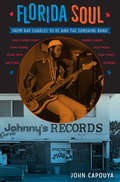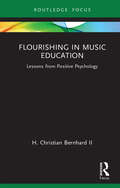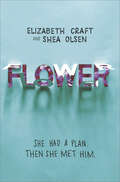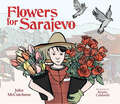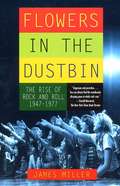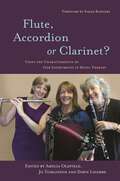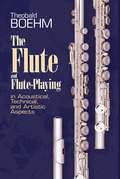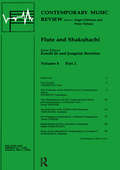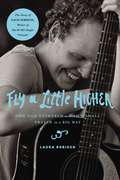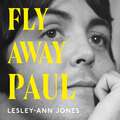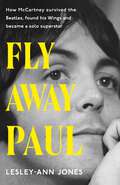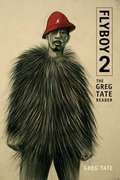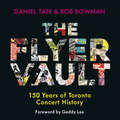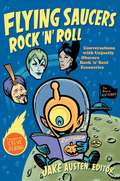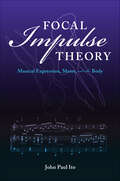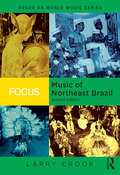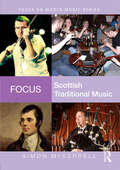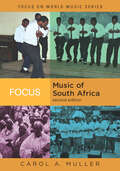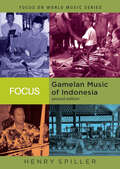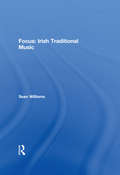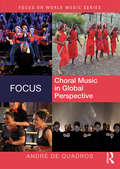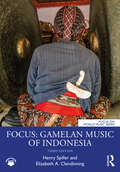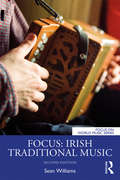- Table View
- List View
Florida Soul: From Ray Charles to KC and the Sunshine Band
by John CapouyaFlorida Historical Society Charlton Tebeau Award University of Tampa College of Arts and Letters Outstanding Scholarship or Creative Work Award When recalling the roots of soul music, most people are likely to name Memphis, Detroit, New Orleans, Muscle Shoals, or Macon. But Florida also has a rich soul music history—an important cultural legacy that has often gone unrecognized. Florida Soul celebrates great artists of the Sunshine State who produced some of the most electric, emotive soul music America has ever heard. This book tells the story of Ray Charles’s musical upbringing in Florida, where he wrote his first songs and made his first recordings. It highlights the careers of Pensacola singers James and Bobby Purify and their producer, Papa Don Schroeder. Florida Soul reveals how Hank Ballard created his international hit song "The Twist" after seeing the dance in Tampa and profiles Gainesville singer Linda Lyndell ("What a Man"). Miami’s Overtown and Liberty City neighborhoods produced Sam Moore of the legendary duo Sam and Dave, Willie Clarke and Johnny Pearsall of Deep City Records, and singer Helene Smith. Miami was also the longtime headquarters of Henry Stone, whose influential company T.K. Productions put out hits by Timmy Thomas, Latimore, Betty Wright, and KC and the Sunshine Band. Stone’s artists and distribution deals influenced charts and radio airplay across the world. Born in the era of segregation with origins in gospel, rhythm and blues, and jazz and reaching maturity during the civil rights movement, soul music is still enjoyed today, still very much a part of our collective culture. John Capouya draws on extensive interviews with surviving musicians to re-create the excitement and honor the achievements of soul’s golden age, establishing Florida as one of the great soul music capitals of the United States.
Flourishing in Music Education: Lessons from Positive Psychology (Routledge New Directions in Music Education Series)
by H. Christian Bernhard IIFlourishing in Music Education: Lessons from Positive Psychology presents research, theory, and best practices about potential pitfalls, as well as strategies for how successful music teachers can negotiate issues in the wake of the COVID-19 climate, both on a daily and long-term basis. Masked and physically distanced classes have been particularly challenging for studio practice and group rehearsals, leading to virtual and digitally edited performances. This concise book is an essential read for those faced with such challenges, addressing key topics including engagement, relationships, meaning, accomplishment, resilience, and hope. Readers are provided with vignettes of struggling and successful music educators, which are then used to examine and consider new techniques and classic reminders for healthy enjoyment of work and life.
Flower
by Elizabeth Craft Shea OlsenThese are the things that I've always wanted: To get the top grades in my class. To make my grandmother proud. And most of all, proof that I could succeed where the rest of my family had not: a Stanford acceptance letter, early admission. My mother and my sister were obsessed with boys and love and sex. So obsessed that they lost sight of their futures, of what they wanted. And in the end, they lost everything. I'll never let a boy distract me. I promised myself that. But that was before Tate. Before the biggest pop star on the planet took an interest in me. Before private planes and secret dates and lyrics meant for me alone. There's so much I don't know. Like why he left music. Where he goes when we're not together. What dark past he's hiding. But when we kiss, the future feels far away. And now...I'm not sure what I want.
Flowers for Sarajevo
by John McCutcheonYoung Drasko is happy working with his father in the Sarajevo market. Then war encroaches. Drasko must run the family flower stand alone.One morning, the bakery is bombed and twenty-two people are killed. The next day, a cellist walks to the bombsite and plays the most heartbreaking music Drasko can imagine. The cellist returns for twenty-two days, one day for each victim of the bombing. Inspired by the musician's response, Drasko finds a way to help make Sarajevo beautiful again.Inspired by real events of the Bosnian War, award-winning songwriter and storyteller John McCutcheon tells the uplifting story of the power of beauty in the face of violence and suffering. The story comes to life with the included CD in which cellist Vedran Smailović accompanies McCutcheon and performs the melody that he played in 1992 to honor those who died in the Sarajevo mortar blast.
Flowers In The Dustbin: The Rise of Rock and Roll, 1947-1977
by James MillerA prizewinning historian and journalist who has covered the pop music scene for more than three decades, James Miller brings a powerful and challenging intellectual perspective to his recounting of some key turning points in the history of rock. Arguing that the music underwent its full creative evolution in little more than twenty-five years, he traces its roots from the jump blues of the forties to the disc jockeys who broadcast the music in the early fifties. He shows how impresarios such as Alan Freed and movie directors such as Richard Brooks (of Blackboard Jungle) joined black music to white fantasies of romance and rebellion, and then mass-marketed the product to teenagers. He describes how rock matured as a form of music, from Chuck Berry and Elvis Presley to the Beatles, Bob Dylan, and Marvin Gaye, defining a decade of rebellious ferment. At the same time, he candidly recounts how trendsetting rock acts from Jim Morrison and the Doors in the late sixties to the Sex Pistols in the late seventies became ever more crude, outrageous, and ugly -- "as if to mark," writes Miller, "the triumph of the psychopathic adolescent." Richly anecdotal and always provocative, Flowers in the Dustbin tells the story of rock and roll as it has never been told before.
Flute, Accordion or Clarinet?: Using the Characteristics of Our Instruments in Music Therapy
by Rivka Gottlieb George Murray Philip Hughes Mike Gilroy Steve Lyons Esther Mitchell Nathan Bettany Anna Lockett Anita Vaz Catherine Warner Joseph Piccinnini Veronica Austin Concetta Tomaino Mary-Clare Fearn Catrin Piears-Banton Stella Compton-Dickinson Helen Mottram Colette Salkeld Caroline Long Alex Street Dawn Loombe Trisha Montague Sarah Rodgers Spela Loti Knoll Grace Watts Emily Corke Paolo Pizziolo Susanna Crociani Penelope Birnstingl Shlomi Hason Joanna Burley Sharon Warnes Caroline Anderson Jonathan Poole Oonagh Jones Nicky Haire John Preston Katy Bell Angela Harrison Prodromos Stylianou Lisa Margetts Susan Greenhalgh Henry Dunn Trygve Aasgaard Billy Davidson Philippa Derrington Jo Tomlinson Holly Mentzer Annie Tyhurst Luke Annesley Tessa Watson Amelia OldfieldMusic therapists are trained to use their first study instrument in clinical practice, yet existing literature focuses almost exclusively on the use of piano, basic percussion and voice. This illuminating book brings together international music therapists who use a diverse range of musical instruments in their clinical work: the clarinet, the piano accordion, the flute, the cello, the trumpet and flugelhorn, the bassoon, the violin, the viola, the harp, the guitar, lower brass instruments (the trombone and the euphonium), the oboe, the saxophone and bass instruments (double bass and bass guitar). Each therapist reflects on their relationship with their instrument and the ways in which they use it in therapeutic settings, discussing its advantages and disadvantages in a variety of clinical populations: children and adolescents, adults with learning disabilities, adults with mental health problems and older people. This will be essential reading for any music therapist or student music therapist who uses or is interested in using a musical instrument in their work, and will be of interest to other caring and healthcare professionals, teachers, musicians and carers wanting to learn more about instrumental music therapy.
Flute, Accordion or Clarinet?: Using the Characteristics of Our Instruments in Music Therapy
by Amelia Oldfield Jo Tomlinson Dawn LoombeMusic therapists are trained to use their first study instrument in clinical practice, yet existing literature focuses almost exclusively on the use of piano, basic percussion and voice.This illuminating book brings together international music therapists who use a diverse range of musical instruments in their clinical work: the clarinet, the piano accordion, the flute, the cello, the trumpet and flugelhorn, the bassoon, the violin, the viola, the harp, the guitar, lower brass instruments (the trombone and the euphonium), the oboe, the saxophone and bass instruments (double bass and bass guitar). Each therapist reflects on their relationship with their instrument and the ways in which they use it in therapeutic settings, discussing its advantages and disadvantages in a variety of clinical populations: children and adolescents, adults with learning disabilities, adults with mental health problems and older people.This will be essential reading for any music therapist or student music therapist who uses or is interested in using a musical instrument in their work, and will be of interest to other caring and healthcare professionals, teachers, musicians and carers wanting to learn more about instrumental music therapy.
The Flute and Flute Playing: In Acoustical, Technical, And Artistic Aspects (classic Reprint) (Dover Books On Music: Instruments)
by Theobald BoehmThe flute (or closely related instrument) has been known since prehistoric times, but up until the middle of the nineteenth century it was still far from being a satisfactory instrument, despite the quantity of important music that had been written for it. Its tone was poor and thin, its volume was low, its keying system was inefficient, and it was very difficult to play.The man who changed all this and invented the modern flute was Theobald Boehm (1794-1881), a Bavarian flute virtuoso, who played at the royal court in Munich. Boehm worked upon the flute for many years; indeed, he even went to the length of studying acoustics at the University of Munich, in order to apply the exact data and principles of the sciences to instrument design. After many years of experimentation and preliminary steps, he created the modern flute in 1847. It was silver and cylindrical, furnished with a parabolic head-joint, accurately placed finger holes, and efficient key mechanism. With only small modifications, this is the flute that is used today.In 1871 Boehm published an account of his research and accomplishments, a book that has come to be recognized as one of the classics of musicology. In it he covered the acoustics of the instrument; the technique for establishing its proportions and keying; his new system of fingering; the key mechanism; the bass flute in G; and similar topics. In the second half of the volume he provided insights on performance, as they emerged from his remarkable virtuosity. This is not a treatise on how to play the flute, but comments upon the development of tone, finger exercises, practicing method, and interpretation, including coloratura. This book is very clearly written and requires no technical knowledge of its reader. It has long been a favorite not only of flutists but also of musicologists, acousticians, and lay persons interested in music.This edition of Boehm's work, translated by Dayton C. Miller of the Case School of Applied Science, also contains biographical notes about Boehm, a list of Boehm's musical compositions, a short bibliography, and a critical introduction. More than 50 musical excerpts and illustrations accompany the text, while the renowned contemporary flutist Samuel Baron has written a new Introduction for the Dover edition.
Flute and Shakuhachi (Contemporary Music Review)
by Kondō Jō Joaquim BernítezFirst Published in 1994. In their quest for new sound materials, avant-garde musicians often produce sounds which accidentally bear a strong resemblance to traditional instruments. While conventional Western instruments have taken on a functional role, instruments such as the shakuhachi are still closely associated with their cultural, religious, and historical roots. The colorful and unique shakuhachi has become the most widely known and used Japanese instrument. This collection provides a comprehensive historical overview of the shakuhachi, its technical aspects and its relationship to the flute.
Fly a Little Higher: How God Answered One Mom's Small Prayer in a Big Way
by Laura SobiechLaura Sobiech tells the amazing story of how God used her son's battle with cancer to touch the lives of millions. "Okay, Lord, you can have him. But if he must die, I want it to be for something big. I want someone's life to be changed forever. " This is what Laura Sobeich prayed when she found out her seventeen-year-old son had only one year to live. With this desperate prayer, she released her son to God's will. At that point, Zach Sobiech was just another teenager battling cancer. When his mother told him to think about writing good-bye letters to family and friends, he decided instead to write songs. One of them, "Clouds," captured hearts and changed not one life but millions, making him an international sensation. He produced a full-length EP, written and performed by Zach and his lifelong friend, Sammy, including a personal goodbye song to each other. The day of Zach's funeral, "Clouds" was the #1 downloaded song on iTunes, and the EP rose to #2. The music video now has more than 7 million views on YouTube, and the documentary Soul Pancake released on Zach's eighteenth birthday has more than 9 million views. But Zach's story is not just about music. It's a testament to what can happen when you live as if each day might be your last. It's a story about the human spirit. It's about how God used a dying boy from a small town in Minnesota to touch the hearts of millions-including top executives in the music industry, major music artists, news anchors, talk show hosts, actors, priests and pastors, and school children across the globe. Zach once said, "I want to be known as the kid who went down fighting, and didn't really lose. " Fly a Little Higher is about how God used Zach to do something big.
Fly Away Paul: The extraordinary story of how Paul McCartney survived the Beatles and found his Wings
by Lesley-Ann JonesThe first definitive account of Paul McCartney's time in Wings, to be published on the 50th anniversary of the bestselling album Band on the RunNo comprehensive biography of the time Paul McCartney spent with Wings has ever been published. A period often dismissed as McCartney's 'missing' years, in fact the band lasted for a decade: two years longer than the Beatles, and wielded such impact and influence that they at one point achieved the status as the biggest live band in the world. Band on the Run sold over 6 million copies worldwide and became EMI's biggest selling album of the 1970s in the UK.Music biographer Lesley-Ann Jones has met McCartney many times and knew his late wife Linda. Here she shows how crucial Linda was to the evolution of Wings - at great cost to herself given the ridicule she was to encounter. But Linda saw that McCartney needed the band in the wake of the break up of the Beatles.Drawing on extensive interviews and her trademark meticulous research, the author shows how this period in Paul McCartney's career was to become crucial not only to his development as an artist, but to his very survival.(P)2023 Hodder & Stoughton Limited
Fly Away Paul: The extraordinary story of how Paul McCartney survived the Beatles and found his Wings
by Lesley-Ann JonesPre-order the remarkable account of Paul McCartney's time in Wings and ascent into solo stardom, by renowned music biographer Lesley-Ann JonesNo comprehensive biography of the time Paul McCartney spent with Wings has ever been published, until now.A period often dismissed as McCartney's 'missing' years, in fact the band lasted for a decade: two years longer than the Beatles, and wielded such impact and influence that they at one point achieved the status as the biggest live band in the world. Band on the Run sold over 6 million copies worldwide and became EMI's biggest selling album of the 1970s in the UK. Music biographer Lesley-Ann Jones has met McCartney many times and knew his late wife Linda. Here she shows how crucial Linda was to the evolution of Wings - at great cost to herself given the ridicule she was to encounter. But Linda saw that McCartney needed the band in the wake of the break up of the Beatles. Drawing on extensive interviews and her trademark meticulous research, the author shows how this period in Paul McCartney's career was to become crucial not only to his development as an artist, but to his very survival.
Flyboy 2: The Greg Tate Reader
by Greg TateSince launching his career at the Village Voice in the early 1980s Greg Tate has been one of the premiere critical voices on contemporary Black music, art, literature, film, and politics. Flyboy 2 provides a panoramic view of the past thirty years of Tate's influential work. Whether interviewing Miles Davis or Ice Cube, reviewing an Azealia Banks mixtape or Suzan-Lori Parks's Topdog/Underdog, discussing visual artist Kara Walker or writer Clarence Major, or analyzing the ties between Afro-futurism, Black feminism, and social movements, Tate's resounding critical insights illustrate how race, gender, and class become manifest in American popular culture. Above all, Tate demonstrates through his signature mix of vernacular poetics and cultural theory and criticism why visionary Black artists, intellectuals, aesthetics, philosophies, and politics matter to twenty-first-century America.
The Flyer Vault: 150 Years of Toronto Concert History
by Daniel Tate Rob BowmanA visual tour de force showcasing Toronto’s vast concert history. “The Flyer Vault book helps bottle the lore, bringing me a little bit closer to my Toronto and its shows that have only grown in renown.” — Danko Jones, musician “These pages will take you on a musical magical mystery tour of Toronto’s important place in concert history. Reading The Flyer Vault creates a rush just like the one you get when the house lights go down!” — Dan Kanter, multi-platinum-selling songwriter/producer “Not sure there’s ever been anything like this...The graphics are fascinating, the script is comprehensive. It’s staggering what’s been unleashed from the Vault.” — Gary Topp, legendary Toronto concert promoter Duke Ellington. Johnny Cash. David Bowie. Nirvana. Bob Marley. Wu-Tang Clan. Daft Punk. These are just some of the legendary names that played Toronto over the last century. Drawing from Daniel Tate’s extensive flyer collection, first archived on his Flyer Vault Instagram account, Tate and Rob Bowman have assembled a time capsule that captures a mesmerizing history of Toronto concert and club life, running the gamut of genres from vaudeville to rock, jazz to hip-hop, blues to electronica, and punk to country.The Flyer Vault: 150 Years of Toronto Concert History traces seminal live music moments in the city, including James Brown’s debut performance in the middle of a city-wide blackout, a then-unknown Jimi Hendrix backing up Wilson Pickett in 1966 — the year a new band from London named Led Zeppelin performed in Toronto six times — and the one and only show by the Notorious B.I.G., which almost caused a riot in the winter of 1995. Complementing the book’s flyers is the story of the music, highlighting such iconic venues as Massey Hall, the Concert Hall/Rock Pile/Club 888, and the BamBoo, alongside lesser-known but equally important clubs such as Industry Nightclub and the Edge.
Flying Saucers Rock 'n' Roll: Conversations with Unjustly Obscure Rock 'n' Soul Eccentrics
by Jake AustenFor nearly twenty years, the much-beloved music magazine Roctober has featured work by some of the best underground cartoonists, exhaustive examinations of made-up genres such as "robot rock," and an ongoing exploration of everything Sammy Davis Jr. ever sang, said, or did. But the heart of the magazine has always been the lengthy conversations with overlooked or forgotten artists. Flying Saucers Rock 'n' Roll gathers the most compelling of these interviews. Eccentric, important artists--including the rockabilly icon Billy Lee Riley, the jazz musician and activist Oscar Brown Jr. , the "Outlaw Country" singer David Allan Coe, and the pioneer rock 'n' roll group the Treniers--give the most in-depth interviews of their lengthy careers. Obscure musicians, such as the Armenian-language novelty artist Guy Chookoorian and the frustrated interstellar glam act Zolar X, reveal fascinating lives lived at rock's margins. Roctober's legendarily dedicated writers convey telling anecdotes in the fervent, captivating prose that has long been appreciated by music enthusiasts. Along with the entertaining interviews, Flying Saucers Rock 'n' Roll features more than sixty images from the pages of Roctober and ten illustrations created for the book by the underground rock 'n' roll artist King Merinuk. Contributors Steve Albini Ben Austen Jake Austen John Battles Bosco Ken Burke Mike Maltese King Merinuk Ken Mottet Jonathan Poletti James Porter "Colonel" Dan Sorenson Jacqueline Stewart
Focal Impulse Theory: Musical Expression, Meter, and the Body (Musical Meaning and Interpretation)
by John Paul ItoMusic is surrounded by movement, from the arching back of the guitarist to the violinist swaying with each bow stroke. To John Paul Ito, these actions are not just a visual display; rather, they reveal what it really means for musicians to move with the beat, organizing the flow of notes from beat to beat and shaping the sound produced. By developing "focal impulse theory," Ito shows how a performer's choices of how to move with the meter can transform the music's expressive contours. Change the dance of the performer's body, and you change the dance of the notes. As Focal Impulse Theory deftly illustrates, bodily movements carry musical meaning and, in a very real sense, are meaning.
Focus: Music of Northeast Brazil (Focus on World Music Series)
by Larry CrookFocus: Music of Northeast Brazil examines the historical and contemporary manifestations of the music of Brazil, a country with a musical landscape that is layered with complexity and diversity. Based on the author’s field research during the past twenty years, the book describes and analyzes the social/historical contexts and contemporary musical practices of Afro-Brazilian religion, selected Carnival traditions, Bahia’s black cultural renaissance, the traditions of rural migrants, and currents in new popular music. Part One, Understanding Music in Brazil, presents important issues and topics that encompass all of Brazil, and provides a general survey of Brazil’s diverse musical landscape. Part Two, Creating Music in Brazil, presents historical trajectories and contemporary examples of Afro-Brazilian traditions, Carnival music, and northeastern popular music. Part Three, Focusing In, presents two case studies that explore the ground-level activities of contemporary musicians in Northeast Brazil and the ways in which they move between local, national, and international realms. The accompanying CD offers vivid musical examples that are discussed in the text
Focus: Music in Contemporary Japan (Focus on World Music Series)
by Jennifer Milioto MatsueFocus: Music in Contemporary Japan explores a diversity of musics performed in Japan today, ranging from folk song to classical music, the songs of geisha to the screaming of underground rock, with a specific look at the increasingly popular world of taiko (ensemble drumming). Discussion of contemporary musical practice is situated within broader frames of musical and sociopolitical history, processes of globalization and cosmopolitanism, and the continued search for Japanese identity through artistic expression. It explores how the Japanese have long negotiated cultural identity through musical practice in three parts: Part I, "Japanese Music and Culture," provides an overview of the key characteristics of Japanese culture that inform musical performance, such as the attitude towards the natural environment, changes in ruling powers, dominant religious forms, and historical processes of cultural exchange. Part II, "Sounding Japan," describes the elements that distinguish traditional Japanese music and then explores how music has changed in the modern era under the influence of Western music and ideology. Part III, "Focusing In: Identity, Meaning and Japanese Drumming in Kyoto," is based on fieldwork with musicians and explores the position of Japanese drumming within Kyoto. It focuses on four case studies that paint a vivid picture of each respective site, the music that is practiced, and the pedagogy and creative processes of each group. The accompanying CD includes examples of Japanese music that illustrate specific elements and key genres introduced in the text. A companion website includes additional audio-visual sources discussed in detail in the text. Jennifer Milioto Matsue is an Associate Professor at Union College and specializes in modern Japanese music and culture.
Focus: Scottish Traditional Music (Focus on World Music Series)
by Simon McKerrellFocus: Scottish Traditional Music engages methods from ethnomusicology, popular music studies, cultural studies, and media studies to explain how complex Scottish identities and culture are constructed in the traditional music and culture of Scotland. This book examines Scottish music through their social and performative contexts, outlining vocal traditions such as lullabies, mining songs, Scottish ballads, herding songs, and protest songs as well as instrumental traditions such as fiddle music, country dances, and informal evening pub sessions. Case studies explore the key ideas in understanding Scotland musically by exploring ethnicity, Britishness, belonging, politics, transmission and performance, positioning the cultural identity of Scotland within the United Kingdom. Visit the author's companion website at http://www.scottishtraditionalmusic.org/ for additional resources.
Focus: Music of South Africa (Focus on World Music Series)
by Carol A. MullerFocus: Music of South Africa provides an in-depth look at the full spectrum of South African music, a musical culture that epitomizes the enormous ethnic, religious, linguistic, class, and gender diversity of the nation itself. Drawing on extensive field and archival research, as well as her own personal experiences, noted ethnomusicologist and South African native Carol A. Muller looks at how South Africans have used music to express a sense of place in South Africa, on the African continent, and around the world. Part One, Creating Connections, provides introductory materials for the study of South African Music. Part Two, Musical Migrations, moves to a more focused overview of significant musical styles in twentieth-century South Africa -- particularly those known through world circuits. Part Three, Focusing In, takes the reader into the heart of two musical cultures with case studies on South African jazz and the music of the Zulu-language followers of Isaiah Shembe. The accompanying CD offers vivid examples of traditional, popular, and classical South African musical styles.
Focus: Gamelan Music of Indonesia (Focus on World Music Series)
by Henry SpillerFocus: Gamelan Music of Indonesia is an introduction to the familiar music from Southeast Asia's largest country - both as sound and cultural phenomenon. An archipelago of over 17,000 islands, Indonesia is a melting pot of Hindu, Buddhist, Islamic, Portuguese, Dutch, and British influences. Despite this diversity, it has forged a national culture, one in which music plays a significant role. Gamelan music, in particular, teaches us much about Indonesian values and modern-day life. Focus: Gamelan Music of Indonesia provides an introduction to present-day Javanese, Balinese, Cirebonese, and Sundanese gamelan music through ethnic, social, cultural, and global perspectives. Part One, Music and Southeast Asian History¸ provides introductory materials for the study of Southeast Asian music. Part Two, Gamelan Music in Java and Bali, moves to a more focused overview of Gamelan music in Indonesia. Part Three, Focusing In, takes an in-depth look at Sundanese gamelan traditions, as well modern developments in Sundanese music and dance. The accompanying CD offers vivid examples of traditional Indonesian gamelan music.
Focus: Irish Traditional Music
by Sean WilliamsFocus: Irish Traditional Music is an introduction to the instrumental and vocal traditions of the Republic of Ireland and Northern Ireland, as well as Irish music in the context of the Irish diaspora. Ireland's size relative to Britain or to the mainland of Europe is small, yet its impact on musical traditions beyond its shores has been significant, from the performance of jigs and reels in pub sessions as far-flung as Japan and Cape Town, to the worldwide phenomenon of Riverdance. Focus: Irish Traditional Music interweaves dance, film, language, history, and other interdisciplinary features of Ireland and its diaspora. The accompanying CD presents both traditional and contemporary sounds of Irish music at home and abroad.
Focus: Choral Music in Global Perspective (Focus on World Music Series)
by André de QuadrosFocus: Choral Music in Global Perspective introduces the little-known traditions and repertoires of the world’s choral diversity, from prison choirs in Thailand and gay and lesbian choruses of the Western world to community choruses in the Middle East and youth choirs in the United States. The book weaves together the stories of diverse individuals and organizations, examining their music and pedagogical practices while presenting the author’s research on how choral cultures around the world interact with societies and transform the lives of their members. Through an engaging series of portraits that pushes beyond the scope of extant texts and studies, the author explores the dynamic realm of world choral activity and repertoire. These personal portraits of musical communities are enriched by sample repertoire lists, performance details, and research findings that reposition a once Western phenomenon as a global concept. Focus: Choral Music in Global Perspective is an accessible, engaging, and provocative study of one of the world’s most ubiquitous and socially significant forms of music-making.
Focus: Gamelan Music of Indonesia (Focus on World Music Series)
by Henry Spiller Elizabeth A. ClendinningFocus: Gamelan Music of Indonesia, Third Edition, introduces the emblematic music of Southeast Asia’s largest country, as sound and as cultural phenomenon, highlighting the significant role gamelan music plays in the national culture while teaching of Indonesian values and modern-day life. Despite Indonesia’s great diversity—a melting pot of indigenous, Hindu, Buddhist, Islamic, Portuguese, Dutch, British, and modern global influences—a forged national identity is at its core. This volume explores that identity, understanding present-day Javanese, Balinese, Cirebonese, and Sundanese gamelan music through ethnic, social, cultural, and global perspectives. New to the third edition: Updated content throughout to reflect current Indonesian history and geography, as well as revivals of gamelan ensembles by the Cirebonese courts Modern examples of Indonesian musics, along with new uses of gamelan and other traditional musics An examination of school gamelan and ISBI as a center of innovation Expanded discussion on dangdut and its current status in Indonesia, along with Islam’s effect on dangdut Listening examples now posted as online eResources
Focus: Irish Traditional Music (Focus on World Music Series)
by Sean WilliamsFocus: Irish Traditional Music, Second Edition introduces the instrumental and vocal musics of Ireland, its diaspora in North America, and its Celtic neighbors while exploring the essential values underlying these rich musical cultures and placing them in broader historical and social context. With both the undergraduate and graduate student in mind, the text weaves together past and present, bringing together important ideas about Irish music from a variety of sources and presenting them, in three parts, within interdisciplinary lenses of history, film, politics, poetry, and art: I. Irish Music in Place and Time provides an overview of the island’s musical history and its relationship to current performance practice. II. Music Traditions Abroad and at Home contrasts the instrumental and vocal musics of the "Celtic Nations" (Scotland, Wales, Brittany, etc.) and the United States with those of Ireland. III. Focusing In: Vocal Music in Irish-Gaelic and English identifies the great songs of Ireland’s two main languages and explores the globalization of Irish music. New to this edition are discussions of those contemporary issues reflective of Ireland’s dramatic political and cultural shifts in the decade since first publication, issues concerning equity and inclusion, white nationalism, the Irish Traveller community, hip hop and punk, and more. Pedagogical features—such as discussion questions, a glossary, a timeline of key dates, and expanded references, as well as an online soundtrack—ensure that readers of Focus: Irish Traditional Music, Second Edition will be able to grasp Ireland's important social and cultural contexts and apply that understanding to traditional and contemporary vocal and instrumental music today.
